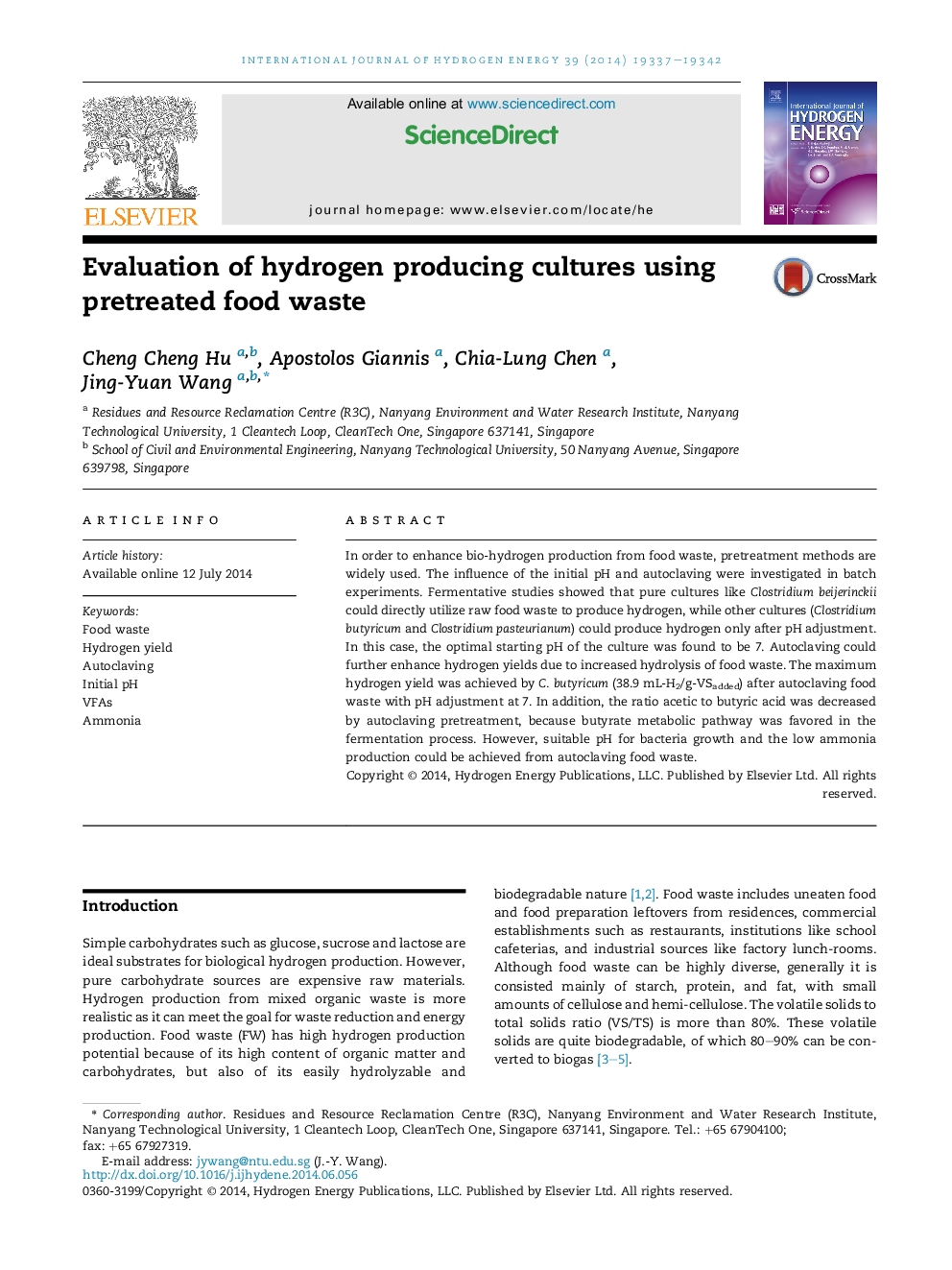| Article ID | Journal | Published Year | Pages | File Type |
|---|---|---|---|---|
| 7717858 | International Journal of Hydrogen Energy | 2014 | 6 Pages |
Abstract
In order to enhance bio-hydrogen production from food waste, pretreatment methods are widely used. The influence of the initial pH and autoclaving were investigated in batch experiments. Fermentative studies showed that pure cultures like Clostridium beijerinckii could directly utilize raw food waste to produce hydrogen, while other cultures (Clostridium butyricum and Clostridium pasteurianum) could produce hydrogen only after pH adjustment. In this case, the optimal starting pH of the culture was found to be 7. Autoclaving could further enhance hydrogen yields due to increased hydrolysis of food waste. The maximum hydrogen yield was achieved by C. butyricum (38.9Â mL-H2/g-VSadded) after autoclaving food waste with pH adjustment at 7. In addition, the ratio acetic to butyric acid was decreased by autoclaving pretreatment, because butyrate metabolic pathway was favored in the fermentation process. However, suitable pH for bacteria growth and the low ammonia production could be achieved from autoclaving food waste.
Related Topics
Physical Sciences and Engineering
Chemistry
Electrochemistry
Authors
Cheng Cheng Hu, Apostolos Giannis, Chia-Lung Chen, Jing-Yuan Wang,
